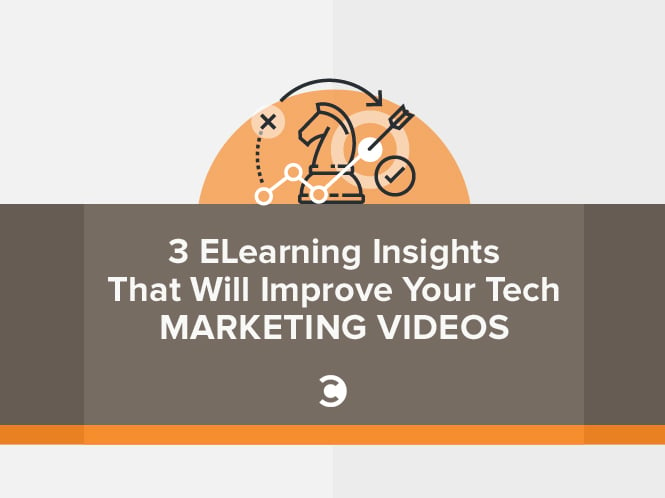3 ELearning Insights That Will Improve Your Tech Marketing Videos. This got me wondering if I might be able to apply established teaching principles to the marketing videos we make for tech companies. We’re not sure how many light bulb moments can be crammed into a short video, but it certainly makes sense to have at least one and build the video around it. Tell Them, Show Them, Let Them Do It People naturally pay attention if they think they’re about to learn something practical to use right away. You don’t need to show the viewer why something matters. However, according to eLearningIndustry.com, there are some best practices for reducing cognitive load that can be applied in video. Video already does this, you’ll say. But the vast majority of marketing videos load all the complex information (the messaging) into the aural channel, and load up the visual channel with eye-catching extraneous information like talking characters and decorative graphics. The guiding principle in an eLearning context is that if content doesn’t support the instructional goal, it should be removed. Understand that in marketing videos, it’s usually more important to put across examples of what you can accomplish with a solution than it is to show how it’s done.

In tech companies, getting people to grasp new ideas and ways of doing things is critical to the sales process. This got me wondering if I might be able to apply established teaching principles to the marketing videos we make for tech companies. I set out to explore some of the best blogs and websites from some of the top eLearning experts. What follows are tips and concepts that apply to marketing videos—tips you, too, should take into consideration in scripting and producing videos.
Light Bulb Moments
The age of bite-size learning is upon us. In eLearning circles, there’s buzz about micro-videos and micro-learning—recommending six-second learning bursts, for example. People seem to learn best in short bursts—light bulb moments—better than they do by continuous effort. Concentration is hard to maintain in a world with so many competing demands on attention.
We’re not sure how many light bulb moments can be crammed into a short video, but it certainly makes sense to have at least one and build the video around it. It might be something along the lines of “Look how easy it is to do X.” Regulatory compliance, for example, is generally seen as an important but uninspiring subject for a video. But if you can show how compliance processes speeds up customer onboarding, as we did in a video for a Canadian software company, light bulbs will go on.
Tell Them, Show Them, Let Them Do It
People naturally pay attention if they think they’re about to learn something practical to use right away. Most buyers, for example, are at least as interested in their own career advancement as they are in a marketer’s solution. They want to make a splash, but they don’t want to take risks.
“Tell them, show them, let them do it” is a pretty standard eLearning approach that may apply. It is especially applicable in B2B content, where the problem you solve is the same problem your competitors solve. You don’t need to show the viewer why something matters. The “why” is the same for everyone—it’s the how that sets you apart. (highlight to tweet)
We like to build videos around practical demonstrations that venture into the weeds—talking to M&A attorneys about negotiation over indebtedness covenants, for example, or a real life scenario that quantifies the value proposition.
Consider the Cognitive Load
Cognitive load theory holds that learning…
COMMENTS